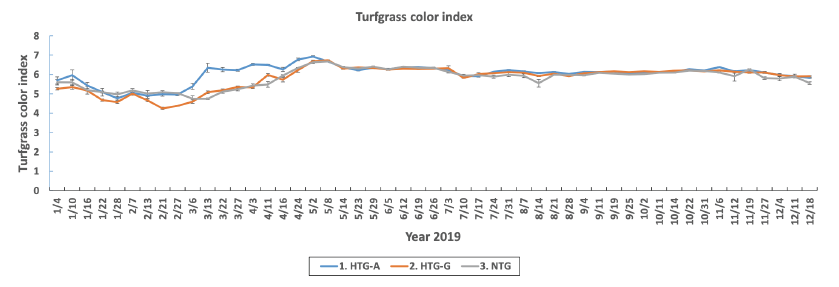Abstract
The study was initiated in Kentucky bluegrass (KB,
Figures & Tables

Fig. 1.Turfgrass color index as affected by natural and hybrid turfgrasses in Kentucky bluegrass during the study. Turfgrass color evaluation was made from January to December in 2019 with TCM 500 Turf Color Meter (Spectrum Technologies, Inc., Aurora, IL, USA). Turfgrass composition and cultivars for HTG-A, HTG-G and NTG treatments are described in Table 1.


